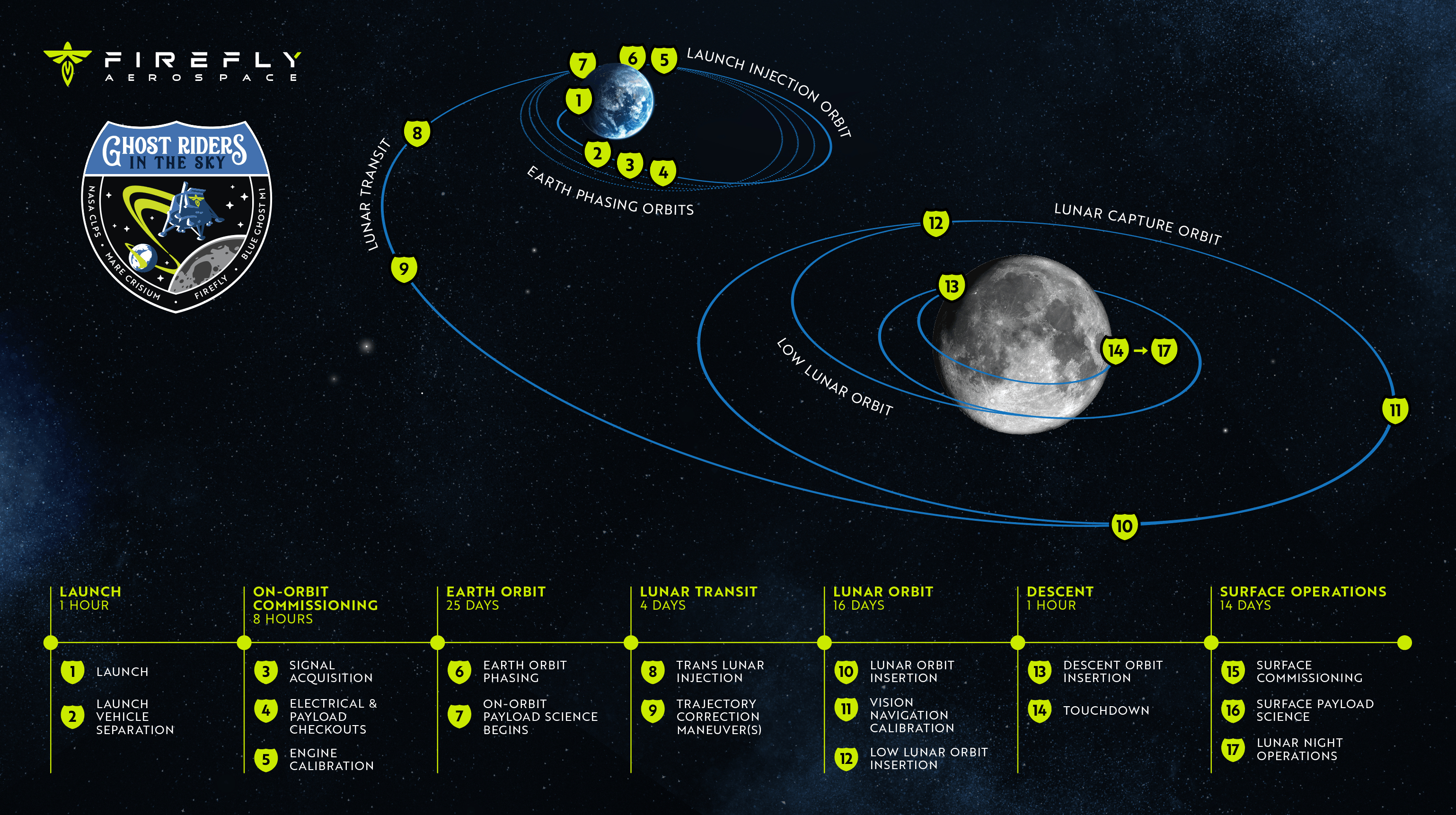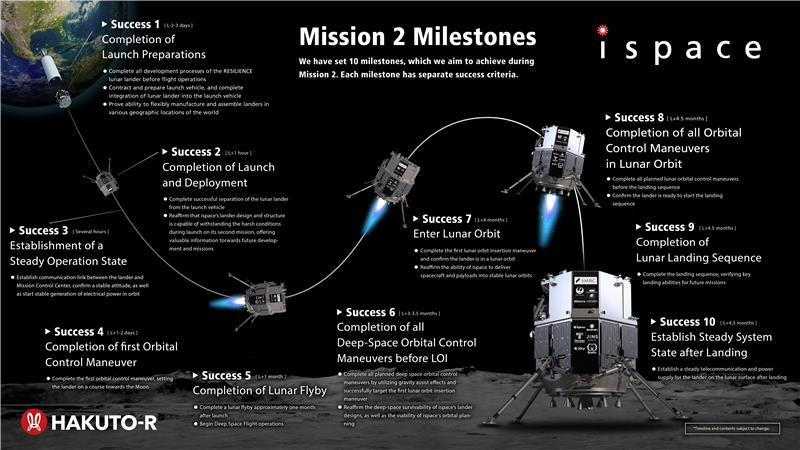
Two newly launched private moon landers have long roads ahead of them.
Early on Tuesday morning (Jan. 15), a SpaceX Falcon 9 rocket sent Blue Ghost and Resilience — lunar landers built by Firefly Aerospace and the Tokyo-based company ispace, respectively — into the final frontier from Florida's Space Coast.
Neither spacecraft is headed to the moon just yet, however. Here's a rundown of what they'll be doing in the coming weeks.

Blue Ghost will spend the next 25 days in Earth orbit, undergoing a variety of systems checks and gathering data with some of its 10 science and technology instruments — NASA gear that earned their spots onboard thanks to the agency's Commercial Lunar Payload Services (CLPS) program.
The lander — Firefly's first-ever mooncraft — will then conduct an engine burn to head toward the moon. Blue Ghost will reach lunar orbit four days later and spend 16 days there before attempting a touchdown in Mare Crisium ("Sea of Crises") on the lunar nearside.
The solar-powered Blue Ghost and its 10 NASA payloads — which you can read about here — will then operate on the surface for a lunar day, or about two Earth weeks. This work will come to an end after the sun sets over Mare Crisium.
"Following payload operations, Blue Ghost will capture imagery of the lunar sunset and provide critical data on how lunar regolith reacts to solar influences during lunar dusk conditions," representatives of Texas-based Firefly wrote in a description of the mission, which it calls Ghost Riders in the Sky. "The lander will then operate for several hours into the lunar night."
Breaking space news, the latest updates on rocket launches, skywatching events and more!
The entire mission, from launch to lunar sunset, is expected to last about 60 Earth days.

Resilience's mission will be more than twice that long, if all goes according to plan. The ispace lander is taking a very circuitous, energy-efficient path to lunar orbit; it's expected to reach that destination four months from now. (There is also a big milestone before that: a flyby of the moon, which Resilience will make in about a month.)
ispace will then spend another two weeks or so gearing up for the landing attempt, which will take place in the Mare Frigoris ("Sea of Cold") region of the moon's northern hemisphere.
Resilience is carrying five science and technology payloads from several commercial and academic partners. Among this gear is a microrover named Tenacious, which was developed by the company's Luxembourg-based subsidiary. The 11-pound (5-kilogram) rover will deploy onto the lunar surface and collect lunar regolith as part of a contract with NASA. (The U.S. space agency did not provide any of the payloads on Resilience, however.)
The ispace lander is also carrying some culture to Earth's nearest neighbor — "Moonhouse," a small red-and-white model house by Swedish artist Mikael Genberg.
Resilience is the second lander that ispace has sent to the moon. The first reached lunar orbit successfully in March 2023 but crashed during its landing attempt a month later after getting confused by the rim of a crater.
Just one private spacecraft has ever successfully landed on the moon. Odysseus, built by Houston company Intuitive Machines, pulled off the landmark feat in February 2024.
Join our Space Forums to keep talking space on the latest missions, night sky and more! And if you have a news tip, correction or comment, let us know at: community@space.com.

Michael Wall is a Senior Space Writer with Space.com and joined the team in 2010. He primarily covers exoplanets, spaceflight and military space, but has been known to dabble in the space art beat. His book about the search for alien life, "Out There," was published on Nov. 13, 2018. Before becoming a science writer, Michael worked as a herpetologist and wildlife biologist. He has a Ph.D. in evolutionary biology from the University of Sydney, Australia, a bachelor's degree from the University of Arizona, and a graduate certificate in science writing from the University of California, Santa Cruz. To find out what his latest project is, you can follow Michael on Twitter.
